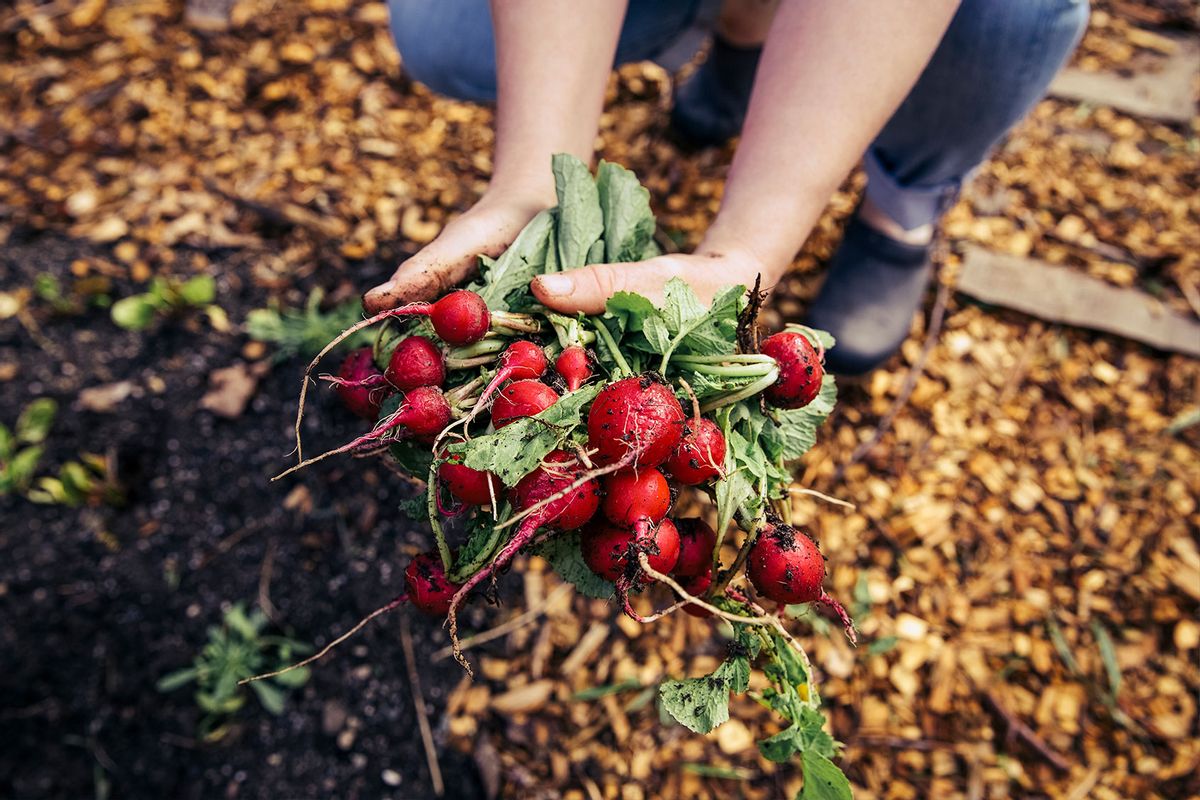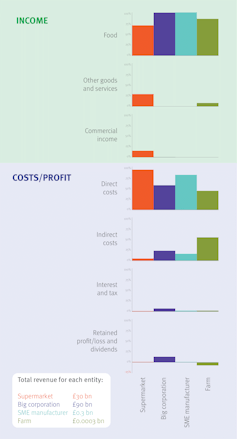More than 60 food industry representatives came together at a recent Downing Street summit to discuss the UK food crisis. It was billed as an opportunity to brainstorm solutions to rising food prices, falling production and uncertainty over trade agreements with overseas partners.
Reports from attendees after the event have been mixed, with many seeing it only as a first step forward. There is much more work to do to tackle rising food prices.
A report issued by the government after the event showcased long-term government investment in infrastructure and the environment, which was welcomed by the National Union of Farmers.
But it only had one short section on fair supply chains — and that didn't address the underlying problems. My research into unseen food supply costs shows transparency and fairness is vital to tackling current food-related challenges in the UK.
The UK needs healthy, nutritious and affordable food provided in a way that is fair to everyone involved. In a cost of living crisis, the media spotlight is going to fall on those in food poverty and on rising food prices.
These are crucial issues to address, but to have any real impact, the discussion must extend even further to cover the systemic unfairness throughout the UK food supply system.
Our food system is dominated by supermarket-style retailing and mass catering, which deal in bulk orders, food storage and big premises, making it very expensive to run with surprisingly few economies of scale.
The overheads — the everyday expenses of these businesses, such as paying for staff and electricity — are huge. The profits returned to producers are minimal as a result.
The Food Research Collaboration, Author provided
I carried out research on food costs and pricing for Sustain, an organization that represents the farming and fishing industries.
I found that out of the entire price you might pay for one grocery item, around 98%-99% goes to production and overheads for intermediary companies such as processors and distributors and then retailers. Farmers and growers are left with the crumbs — sometimes as little as 1p of profit for each item of produce.
Discounts along the food supply chain
However many schemes the government has, the day-to-day survival of UK food businesses depends on a fair return on the work done to get food from farm to fork. But consumers want lower prices and to achieve this, buyers from retailers, catering and public procurement negotiate discounts.
As a director of a fresh produce distributor I interviewed for an earlier project said:
Everyone wants the prices that come from trading [haggling] but the quality that comes from long-term relationships.
When buying and selling food, organizations along the supply chain need some level of surplus for contingencies and reinvestment. Expectations of discounts from other parts of the chain, such as retailers, takes money away from those at the beginning: the farmers, growers and processors.
Along with negotiations for volume discounts, my research shows that these suppliers are often paid a price based on just the costs of producing the item, also called the marginal costs. This means seeds, feed, fertilizers and manual labour in the case of farmers or ingredients, processing costs and packaging for manufacturers.
The trouble is, the factors that go into marginal costs — costs once overheads are covered — aren't equal across the chain. For a supermarket, marginal cost includes all the expenses of running a store, which is typically over 90% of their costs. So they set prices which enable them to cover that amount.
Other members of the supply chain such as farmers and growers or bakers, class about 70% of their costs as overheads, leaving marginal costs of around 30%. A system where one party gets to cover over 90% of their costs while another can only cover 30% is not fair.
More than 4 million people are employed in the food and drink industry in the UK — around 13% of the UK workforce. Many of these people working for food businesses need help to put food on the table because of the cost of living crisis.
But their low wages stem from things like discounting and marginal cost negotiations by companies across the supply chain.
Andrew Opie, director of food and sustainability at the British Retail Consortium (BRC), has said retailers "are investing heavily in lower prices for the future", expanding affordable food ranges, locking the price of many essentials and offering support to vulnerable groups.
The need for transparency
Calls for greater transparency in food supply chains were implicit in the report from the recent government forum, but there are no explicit plans to do this. This would take government action at national and international level.
For example, when conducting my research, I found a lot of detailed data was available on the cost of production for food by farmers and growers due to a long post-second world war history of creating benchmarks for production and fostering better business practices. But not as much data was available from the retail side of the market.
While many listed companies have to segment their financial information, sales categories are often only broken down into "Fuel" and "Everything Else". A BRC spokesperson said: "This information is commercially sensitive, if it was published it would have an adverse impact on competition, the very thing which has kept prices lower for consumers."
But even if it is commercially sensitive information, the current situation hardly leads to transparency about costs and profits across the supply chain.
The dairy and other regulations proposed in the Agriculture Act 2020 and highlighted by the government following its recent Farm to Fork forum are codes of practice, not fundamental regulations or legal requirements. Unless stronger rules are created to tackle the underlying unfairness of food supply chains, the overall picture will not change in a way that benefits everyone, including consumers and producers.
Lisa Jack, Professor of Accounting, University of Portsmouth
This article is republished from The Conversation under a Creative Commons license. Read the original article.




Shares